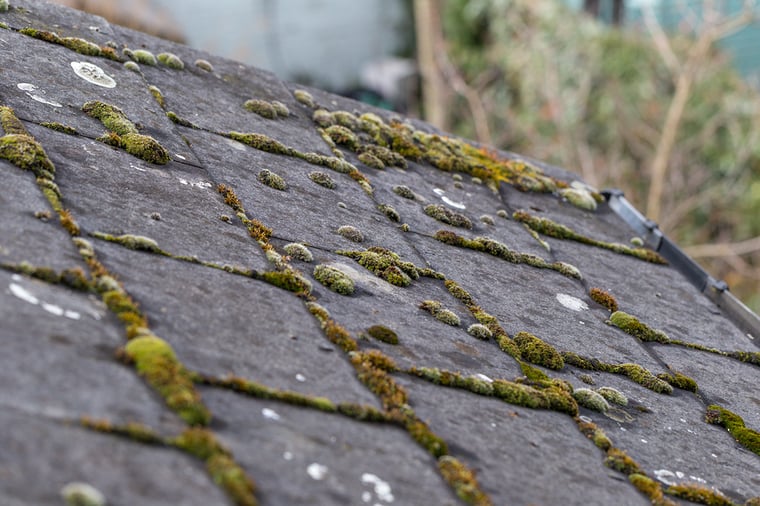As a responsible homeowner, it’s important that you are aware of every potential threat to the integrity of your roof. There are many types of fungus that can grow on your roof. Not only are these growths unattractive, but too much growth can cause significant damage to your roof, the rest of your home, and potentially cause health issues for your family.
4 Types of Roof Fungus Homeowners Should Know

Mold
- What does it do to the roof? Mold can spread and contribute to roof damage, however, the more important issue is that it can create health hazards for your family as it spreads into the drywall and other spaces of your home.
- How did it get there? Moisture deposits cause mold to grow on your roof and it can spread to other exterior and interior areas of the house. Mold spores can travel through the air as well, which means mold on your neighbor’s roof can easily make its way to yours.
- How can it be removed? A mixture of bleach and water can remove mold.
Mildew
- What does it do to the roof? Quickly spreads moisture throughout the top of the roof, potentially leading to damages and leaks.
- How did it get there? Like other fungi, mold thrives in warm and moist places.
- How can it be removed? A mixture of water and bleach can remove the mildew.
Moss
- What does it do to the roof? Moss can cause nearly all roofing materials to degrade over time. It can also lift up shingles, potentially causing rot and leaks.
- How did it get there? This fuzzy-looking fungus thrives in a moist, humid environment, especially on roofs that are shaded by trees.
- How can it be removed? While some homeowners incorporate moss into their exterior design aesthetic, others don’t want any moss on their rooftop. Moss can be removed by mixing water with only one of the following: white distilled vinegar, chlorine bleach, oxygen bleach, or dish soap.
Algae
- What does it do to the roof? Algae can appear black or green. Over time, it will deteriorate the shingles. Because it can spread, it can lead to roof rotting. Algae can also form in the gutters and make its way to the roof.
- How did it get there? Dampness and humidity are two conditions that can increase the chances of algae growth on roofs.
- How can it be removed? A solution of bleach and water is a suitable way to remove algae.
Fungus & Your Roof
The bad news is that all four types of fungus can spread moisture across your roof, leading to significant damages like roof rot, leaks, and shingle deterioration if left untreated. The good news is that these fungi are easily removed. You can also proactively prevent mold by treating your roof shakes and shingles, installing ridge vents, cleaning your gutters regularly, and trimming branches that hang over the roof.
Unsure if you have fungi growing on your roof? Place a call to First Quality Roofing & Insulation today at 702-262-7847 — we’ll be happy to inspect your roof and help you get rid of any mold, mildew, moss or algae you may have!

















